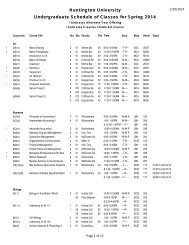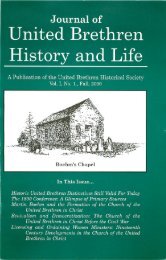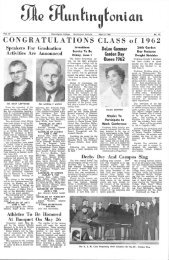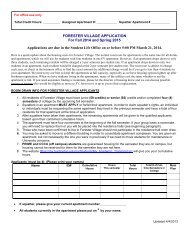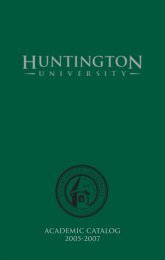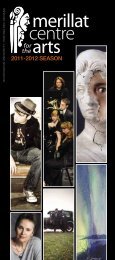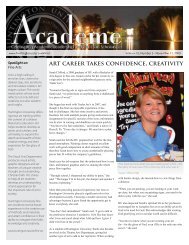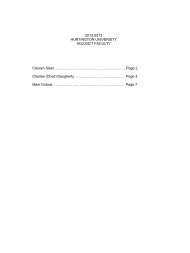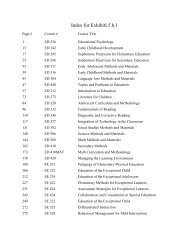Gillian Clark, Christianity and Roman Society - Huntington University
Gillian Clark, Christianity and Roman Society - Huntington University
Gillian Clark, Christianity and Roman Society - Huntington University
You also want an ePaper? Increase the reach of your titles
YUMPU automatically turns print PDFs into web optimized ePapers that Google loves.
BOOK REVIEWS 129<br />
One feature that can both delight <strong>and</strong> annoy involves the intrusion of three-to-four<br />
page vignettes describing the process of new states entering the Union after the original<br />
thirteen. Though well-written, informative, <strong>and</strong> often amusing, these splendid state<br />
portraits abruptly cut into the narrative. On the other h<strong>and</strong>, the paperback edition lacks<br />
pictures or other graphics (whether the reader desires them or not), which would chop up<br />
the narrative’s flow even further. (Obviously, people looking for a flashy coffee table<br />
history need not buy the book.) Readers who would enjoy the stories of state leaders<br />
hustling into the Union, however, will not really find the interruptions bothersome.<br />
One real practical problem revolves around the time period covered by the book—<br />
1585 to 1828. It may frustrate a professor looking for a new book for courses divided in<br />
conventional temporal units—usually Colonial America <strong>and</strong> the Early National Period<br />
are two distinct courses, for instance, while freshman surveys normally go through the<br />
Civil War or Reconstruction. One must conclude that Professor McDougall did not write<br />
the book for courses for college students. Yet this excellent book deserves as wide an<br />
audience as possible. It can enlighten <strong>and</strong> entertain a student, a casual reader, a history<br />
buff, or a professional historian. Perhaps this positive review will help facilitate the<br />
book’s serious perusal among some people who will appreciate it <strong>and</strong> then apply its many<br />
insights to their own teaching <strong>and</strong> scholarship.<br />
Patrick Carey, American Catholics: A History. Westport: Praeger, 2004. Pp. x +<br />
290. $49.95.<br />
Peter R. D’Agostino, Rome in America: Transnational Catholic Ideology from<br />
Risorgimento to Fascism. Chapel Hill: <strong>University</strong> of North Carolina Press, 2004.<br />
Pp. xi + 393. $22.50.<br />
Reviewed by Zachary R. Calo, <strong>University</strong> of Pennsylvania; <strong>University</strong> of<br />
Virginia<br />
The canonical texts of postwar American Catholic history, particularly those of John<br />
Tracey Ellis, Jay Dolan <strong>and</strong> James Hennessey, have been informed by an overriding<br />
concern with the Church’s attempt to accommodate its practices <strong>and</strong> beliefs to the<br />
dictates of the American democratic creed. From within the cauldron of political<br />
liberalism, Catholicism confronted Americanism <strong>and</strong> emerged as a new <strong>and</strong> distinct<br />
public faith. While this narrative has not been the only concern of historians—<strong>and</strong> its grip<br />
on the imagination of American Catholic historians has certainly lessened—it continues<br />
to inform the discipline in great measure.<br />
Patrick Carey’s book captures the best insights <strong>and</strong> accomplishments of the<br />
traditional Americanist methodology. His book is focused on such staple themes as the



